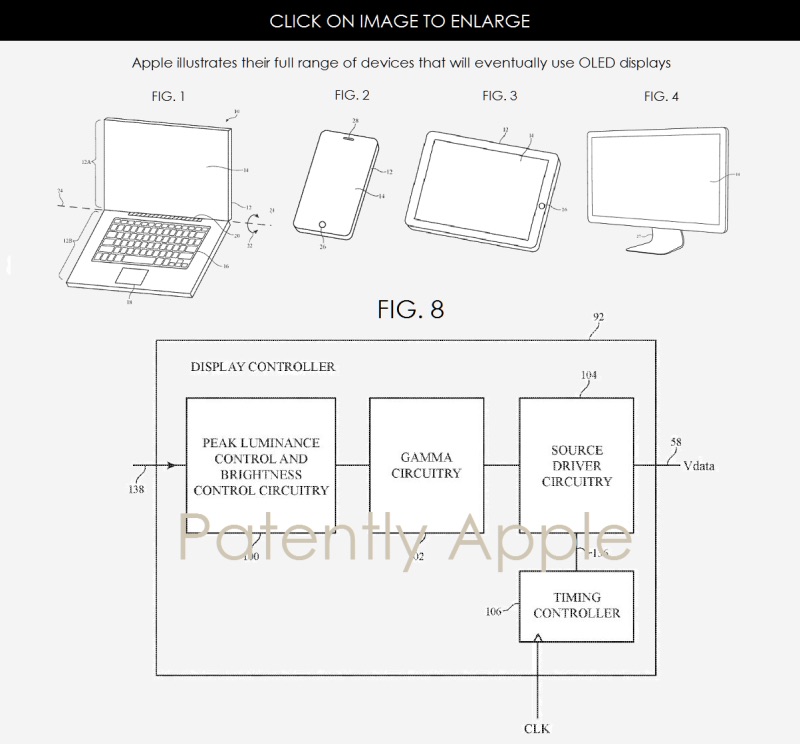New Apple Patent Suggests iPhone 8 Will Boast an Advanced ‘Dimming’ OLED Display

Toggle Dark Mode
To some, Apple is and always has been a pioneer in the tech industry — constantly innovating, bringing products to market that seemingly set the stage for all other manufacturers to one day follow suit. Yet, in the eyes of many others, Cupertino is merely a tech-titan trying to keep pace with technological advancements set in motion years and years ago by some its fiercest competitors.
A clear example of this catch 22 would be to look at Samsung, for instance, the South Korea-based tech-titan behind the iconic Galaxy S and Galaxy Note smartphone line. In recent years, while Apple has maintained a steadfast consistency with its once supreme Retina displays, Samsung has churned out increasingly more advanced OLED screens, known as Super AMOLED displays, boasting even higher resolution, battery saving, and color rendering properties than their LCD-LED counterparts.
And while Apple could have easily adopted this significantly more advanced Super AMOLED technology, years and years ago — just like Samsung did — there’s always a good reason that Cupertino appears to take its time when implementing such major technology advancements — and that’s because the company wants to ensure its tech is always one step ahead of the competition.
To that end, a few new patents that were granted Apple earlier this week by the U.S. Patent and Trademark Office appear to shed some light on the formidable future and implications of Apple’s rumored transition to OLED display technology.
But first, to address the most important questions: what exactly is ‘OLED’ technology? And what does it mean for the end user?
OLED, an acronym for Organic Light-Emitting Diode, is a technology that, unlike traditional, backlit Liquid Crystal Displays (LCDs), relies not on an underlying light source to produce and portray colors — but rather, on a thin, luminescent layer of Organic film that produces light in response to an underlying electrical current. In other words, while traditional LCD displays rely on a series of very thin white lights, which project said light across the display in order to “light up” the on-screen image, OLED displays do not utilize a light source at all — but rather, deep black filaments, working in conjunction with electrical currents, which, in turn, produce the on-screen image.
The result? While LCD displays typically produce brighter, whiter hues (iOS user interface, anyone?), OLED panels, such as those employed by Samsung, produce richer, deeper blacks, which result in more red, green, and blue (RGB) color saturation. Note the darker user interfaces on recent Samsung, Android-based handsets, such as the Galaxy Note 7, S7, and others, for instance.
It’s also worth noting that OLED displays are much more efficient when it comes to conserving valuable battery life. Since much more battery power is required to light up an LCD display, in relation to there being no “light” present in an OLED panel, a typical OLED display will not only require much less of your battery to run, but it will also be much easier to read in certain environments — such as in direct sunlight — because of the technology’s amazing anti-reflective properties.
Now, moving on to Apple’s recent patents, the first of which the company is referring to in its application as an “Organic Light-Emitting Diode Display with Smooth Dimming Control,” according to PatentlyApple. The company points to an issue that plagues the current slate of OLED displays on the market, in which, when exposed to different lighting situations, the display tends to fluctuate in brightness and color saturation due to an inability of processing certain voltages accurately. Apple’s patent, in essence, seeks to rectify this issue, primarily by introducing an OLED display that’s inherently coupled with a proprietary ‘smooth dimming’ apparatus to help regulate the display’s brightness more accurately.
In its second application, Apple similarly talks about a quote unquote “Organic Light-Emitting Diode Display with Gate Pulse Modulation,” which refers to a new, proprietary protocol the company is working on to help regulate the color saturation let off by individual pixels on the screen.
Finally, as you can see from the figure below, Apple appears to be at least contemplating the idea of one day bringing this advanced OLED technology to devices beyond the Apple Watch, such as iPhone, iPad, and perhaps even the MacBook. Yes, the company’s Apple Watch is outfitted with an OLED display, albeit one that measures a relatively paltry 1.65-inches.. However, we’ve been hearing plenty of mumblings from the rumor mill, and therefore have plenty of reason to believe, that the Cupertino-company will soon be transitioning to OLED display technology in forthcoming iPhones — possibly even beginning with the iPhone 8, which many analysts believe will be touching down as early as the fall of 2017.
Of course, in light of these advanced OLED patents granted to Apple, we can only assume that the company is working on a technology that, as always, is far superior than anything currently available.. But that’s just Apple, right? We might have to wait a bit longer, but in the end, we get a much better product!
What do you think about Apple’s new OLED display patents? Let us know in the comments!







